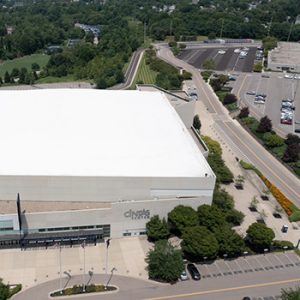Rising Roofing Standards Offer Eco-Friendly Opportunities
It’s not often that a single job or project can make a big difference for one of the world’s most pressing issues.
But commercial roofers have that chance whenever they replace an old roof with a new one.
“Every time we remove a roof system, we have the opportunity of increasing the building’s thermal efficiency,” said Nick Sabino, former chairman of the board for the National Roofing Contractors Association and president of Deer Park Roofing in Cincinnati, Ohio.
Around 40% of the world’s CO2 emissions come from buildings. With the growing focus on climate change and the need to reduce carbon footprints, the construction and renovation sector will have a big role to play. That’s where roofing and insulation comes in.

Evolving Energy Codes
Over the last two decades, energy codes for commercial roofing insulation have continued to push for better efficiency, including higher minimum thermal requirements for a project’s R-value.
In the roofing industry, R-value is a measure of a material’s long-term thermal resistance (LTTR). A higher R-value means the material is more resistant to heat transfer, making it a better insulator. Polyisocyanurate is one of the most popular insulation materials because it has the highest R-value per inch compared to any other insulation.
While these codes are being implemented in new construction projects, they also provide the guidelines for roof replacements of existing buildings. Many of these buildings were built before energy codes were in place, so replacing the roof presents a great opportunity to slash the carbon footprint of that structure.
One example Sabino’s team has worked on recently was the Cintas Center, a sports arena and conference center at Xavier University. The building originally broke ground in 1998. Based on the energy codes at the time, the roof insulation had an R-value of R-15. After renovations completed in 2020, the R-value rose to R-30.
Reducing Emissions, Reducing Cost
In addition to reducing the carbon footprint, increasing the R-value also increases the energy savings and thus reducing energy costs for the building owners. By following modern codes, energy savings can improve by 5-10%.
“Over the course of the lifespan of the roofing system, it adds up to tens of thousands to hundreds of thousands of dollars,” said Sabino. These savings are even more significant when fluctuating energy costs are on the high side.
One tool that can be used to calculate energy savings for a proposed project is NRCA’s EnergyWise Roof Calculator. Users can input the R-value of the current roof and the R-value of the proposed new roof, and using current energy prices, the calculator provides an estimate of savings over the roof’s lifespan.
Chances to Make a Difference
With the opportunity to improve the energy efficiency of buildings, Sabino says he has seen more young people joining the roofing industry worldwide that have a mission-driven focus.
As younger generations prioritize climate change as a major issue, the chance to make a positive impact on the environment can be a big draw to careers in roofing.
“If you talk to somebody that works in an electric car factory, they say ‘we’re reducing the world’s carbon footprint,’” said Sabino, “and that’s what roofers are doing as well.”
Interested in receiving more great construction news, research and content from NCCER? Click here to join our mailing list!

